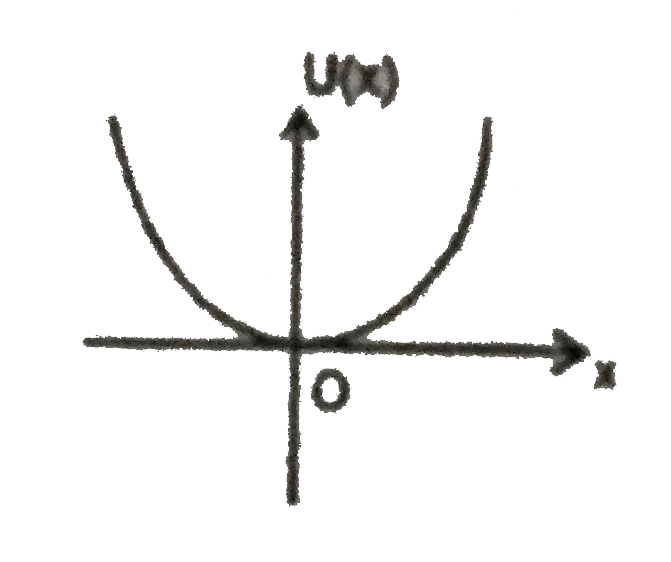The function Ψ(x) displayed in Eq. 37-19 can describe a free particle, for which the potential energy is U(x) = 0 in Schrodinger's equation (Eq. 37-11). Assume now that U(x)=U0=a constant in that equation. Show that Eq. 37-19 is a solution of Schrodinger's equation, with
k=2πh√2m(E−U0)
giving the angular wave number k of the particle.
To show that the function Ψ(x) displayed in Eq. 37-19 is a solution of the Schrödinger's equation with a constant potential energy U(x)=U0=a, we will follow these steps:
Step 1: Write down the time-independent Schrödinger equation
The time-independent Schrödinger equation for a particle in a potential U(x) is given by:
−ℏ22md2Ψ(x)dx2+U(x)Ψ(x)=EΨ(x)
Step 2: Substitute U(x)=U0=a
Substituting U(x) into the equation, we have:
−ℏ22md2Ψ(x)dx2+aΨ(x)=EΨ(x)
Step 3: Rearrange the equation
Rearranging the equation gives:
−ℏ22md2Ψ(x)dx2=(E−a)Ψ(x)
Step 4: Define k2
Let k2=2mℏ2(E−a). Then we can rewrite the equation as:
d2Ψ(x)dx2+k2Ψ(x)=0
Step 5: Solve the differential equation
The general solution to this differential equation is:
Ψ(x)=Aeikx+Be−ikx
where A and B are constants determined by boundary conditions.
Step 6: Relate k to energy
From our definition of k:
k=2πℏ√2m(E−a)
This shows that k is indeed related to the energy of the particle minus the potential energy.
Conclusion
Thus, we have shown that Ψ(x) can describe a particle in a constant potential U0=a and that the angular wave number k is given by:
k=2πℏ√2m(E−U0)
The time-independent Schrödinger equation for a particle in a potential U(x) is given by:
Substituting U(x) into the equation, we have:
Rearranging the equation gives:
Let k2=2mℏ2(E−a). Then we can rewrite the equation as:
The general solution to this differential equation is:
From our definition of k:
Thus, we have shown that Ψ(x) can describe a particle in a constant potential U0=a and that the angular wave number k is given by:
Topper's Solved these Questions
- PHOTONS AND MATTER WAVESBOOK - RESNICK AND HALLIDAYCHAPTER - PHOTONS AND MATTER WAVESEXERCISE - PRACTICE QUESTIONS (Single Correct Choice Type)
47 Videos
- PHOTONS AND MATTER WAVESBOOK - RESNICK AND HALLIDAYCHAPTER - PHOTONS AND MATTER WAVESEXERCISE - PRACTICE QUESTIONS (More than One Correct Choice Type)
5 Videos
- PHOTONS AND MATTER WAVESBOOK - RESNICK AND HALLIDAYCHAPTER - PHOTONS AND MATTER WAVESEXERCISE - Check points
3 Videos
- OSCILLATIONSBOOK - RESNICK AND HALLIDAYCHAPTER - OSCILLATIONSEXERCISE - Practice Questions
57 Videos
- RELATIVITYBOOK - RESNICK AND HALLIDAYCHAPTER - RELATIVITYEXERCISE - PRACTICE QUESTIONS (Integer Type)
5 Videos
Similar Questions
Knowledge Check
A particle of mass m is moving in a potential well, for which the potential energy is given by U(x)=U0(1−cosax) where U0 and a are positive constants. Then (for the small value of x)
Athe time period of small osciallation is T=2π√maU0Bthe speed of the particle is maximum at x=0Cthe amplitude of oscillations is π8Dthe time period of small osciallations is T=2π√ma2U0A particle free to move along the X−axis has potential energy given by U(X)=k[1−exp(−X2)] of appropriate dimensions. Then-
Aat point away from the origin, the particle is in unstable equilibriumBfor any finite nonzero value of X, there is a force directed away from the originCit its total mechanical energy is k/2, it has its minimum kinetic energy at the originDfor small displacement from X=0, the motion is simple harmonicA particle free to move along the x-axis has potential energy given as
U(x)=k[1-exp(−x2)]for −∞≤+∞, where k is a positive constant of appropriate dimensions. Then :Aat points away from origin, the particles is in equilibriumBfor any finite non-zero value of x, there is a force directed away from the originCIts total mechanical energy is k/2 and it is equal to its equal to its kinetic energy at originDat x=0, the motion of the particle is simple harmonic
The wavefunction of a particle of mass m in a unidimensional potential field U(x)=kx2/2 has in the ground state the form Ψ(x)=Ae−αx2, where A is a normalization factor and α is positive constant. Making use of a Schrodinger equation, find the constant α and the energy E of the particle in this state.
View SolutionIf a particle of mass m moves in a potential energy field U=U0−ax+bx2 where U0, a and b are positive constants.Then natural frequency of small oscillations of this particle about stable equilibrium point is 1xπ√bm. The value of x is?
View SolutionA particle free to move along the x-axis has potential energy given as
U(x)=k[1-exp(−x2)]for −∞≤+∞, where k is a positive constant of appropriate dimensions. Then :
View SolutionIdentify the correct variation of potential energy U as a function of displacement x from mean position (or x2) of a harmonic oscillator (U at mean position =0)
View SolutionFigure shows a plot of potential energy function U(x)=kx2 where x=displacement and k=constant. Identify the correct conservative force function F(x)

View Solution
